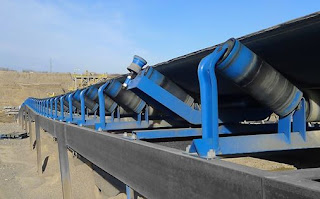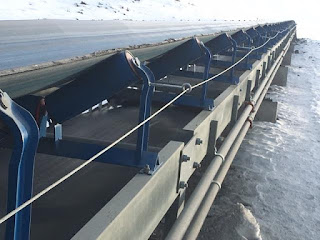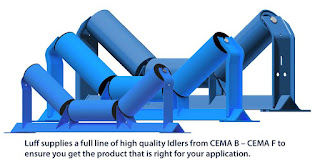Everything you need to know about conveyer belts
Plastic belt conveyors are the result of technological
improvements in the field of material sciences. The belts are made of material
that is suited for use in food and other industries where inertness of the
conveying medium is most desirable. The conveyor belt allows for automatic
handling of food products and its inertness is attested by the authorities.
Many manufacturers of food products test their assembly lines for undesirable
reactions with their products, only to find that such conveying mechanism
allows in maintaining the highest standards. Conveyor belt cleaners is also
highly important to ensure proper functioning.
The benefits of plastic over other types
Besides the chemical inertness, there are many reasons for
choosing plastic belt conveyors. The light weight operation of the conveyor
modules is one important reason. The modules commonly feature polycarbonate
construction and allow for easy connection to make long assembly lines, with
different degrees of inclines. The systems operate at least dB levels as compared
to other systems and that too despite higher drive motor rpms. Assembling the
system is easy. Many production unit owners prefer to convert their existing
systems into plastic conveyors by mounting sprockets to a shaft by changing
rollers. Worker safety is greatly improved even when overhead systems are used.
Most belts will work with different modular systems. So if you have a system
then a wide range of conveyor belts can be used with it.
Working with a variety of products
Plastic conveyor systems come with a variety of working
surfaces which allow for use with different products. Sprockets or other
variants prevent dead zones, i.e. where a product tends to stop on the conveyor
as the surface is even and suits the product being conveyed. Traditional
rollers frequently present with such problems. The Plastic Belt Conveyors is
highly flexible which in turn allows for improved conveyance of the product and
also minimizes product damage. The flexibility allows for side-flexing and
makes for better utilization of ground space in addition to decreased
production time.
Low cost of maintenance
The cost of maintenance is lower compared to other types of
systems as repairs can be performed without removing the belt. They can be
washed down, something that cannot be done with fabric variants. The provision
for washing and restoring hygiene standards is another reason why the food and
meat processing industries prefer plastic Conveyor systems. Washing can be done
with appropriate cleaners or even soap water. Fabric belts on the other hand
are not easy to clean and after prolonged use, can become a hindrance to
maintaining hygiene standards in Canada. They have to be removed to be cleaned
which disrupts an entire day of work. That apart, these fabric belts have to be
replaced frequently as the wear is higher compared to their plastic
counterparts.
In case you’re willing to know anything more about conveyor
belt or conveyor belt cleaners, then feel free to visit LUFF Conveying
Performance. For more details, visit: https://luffindustries.com/




Comments
Post a Comment